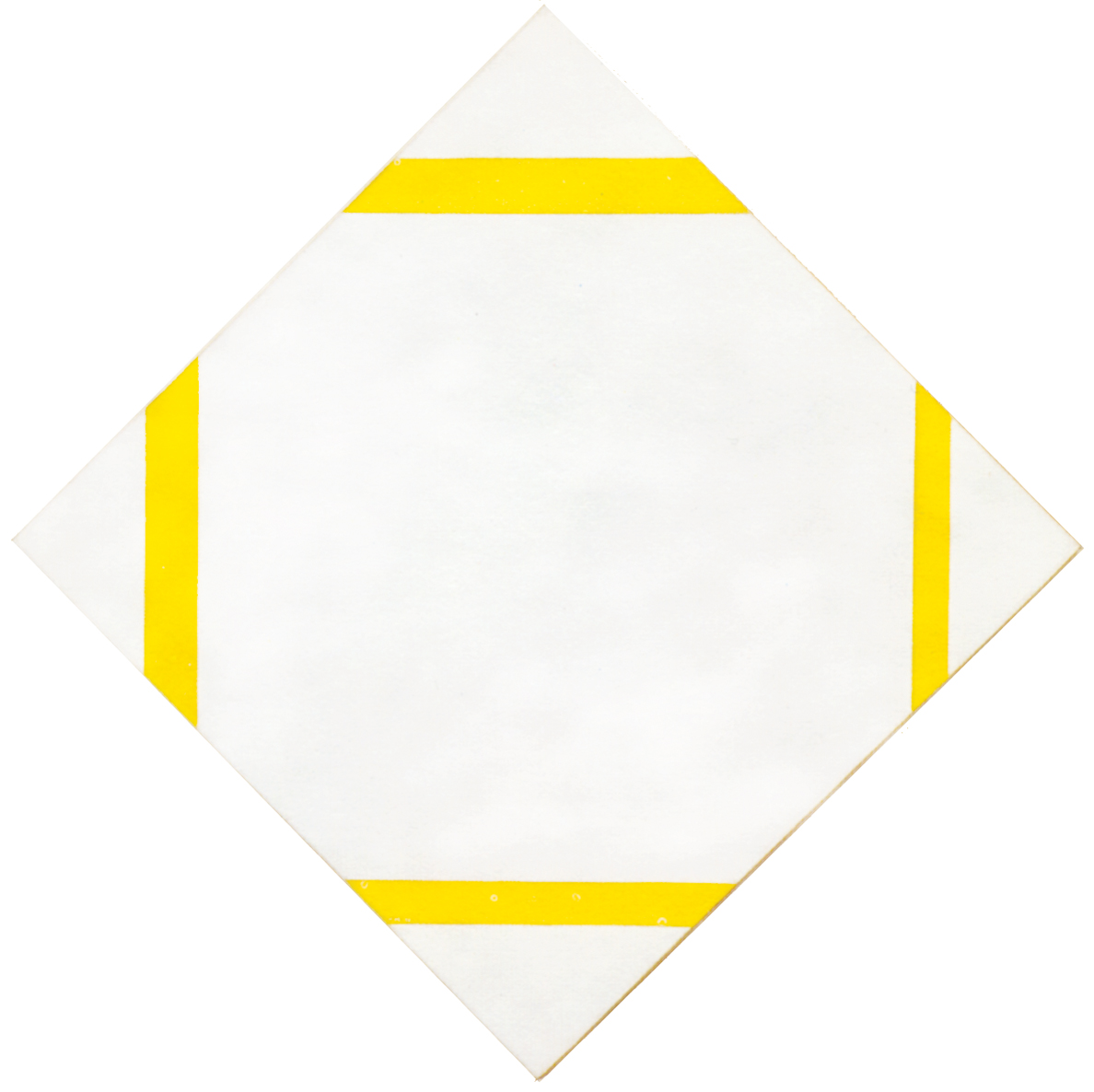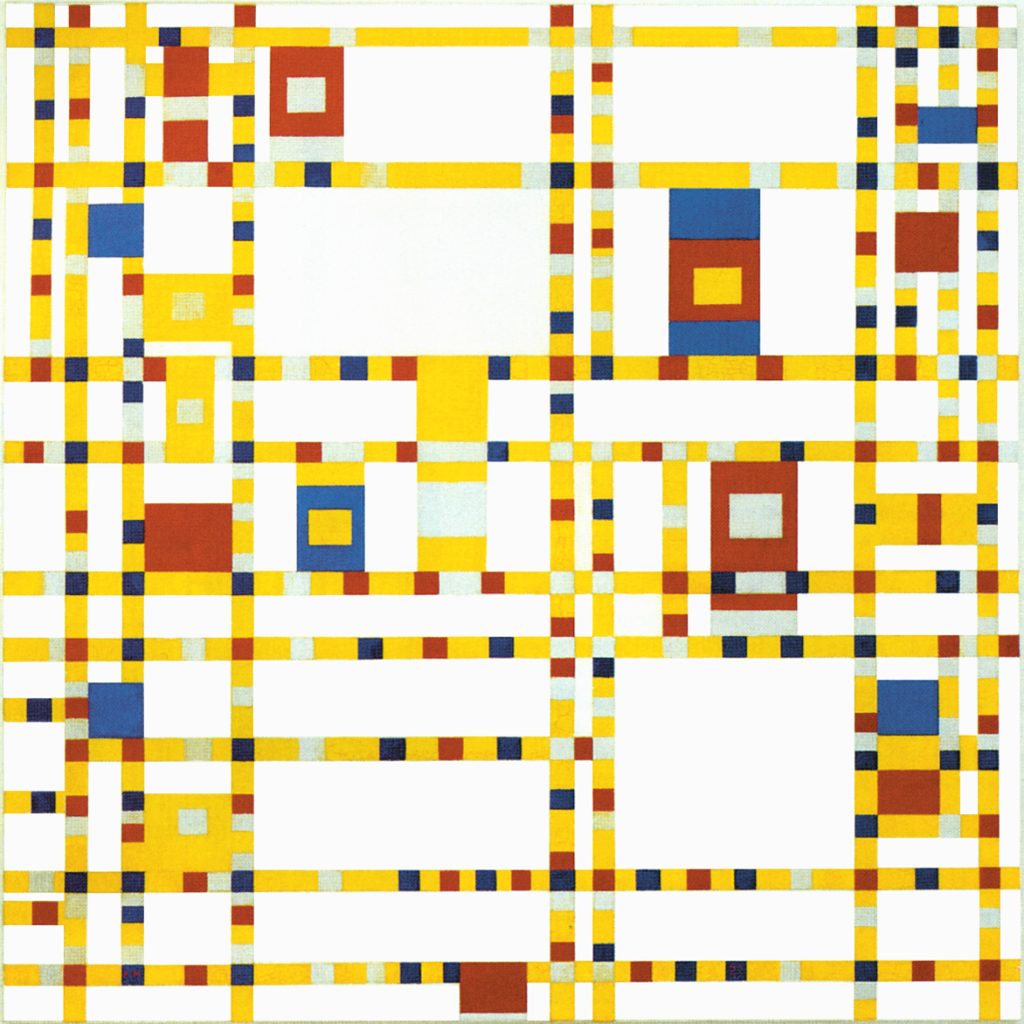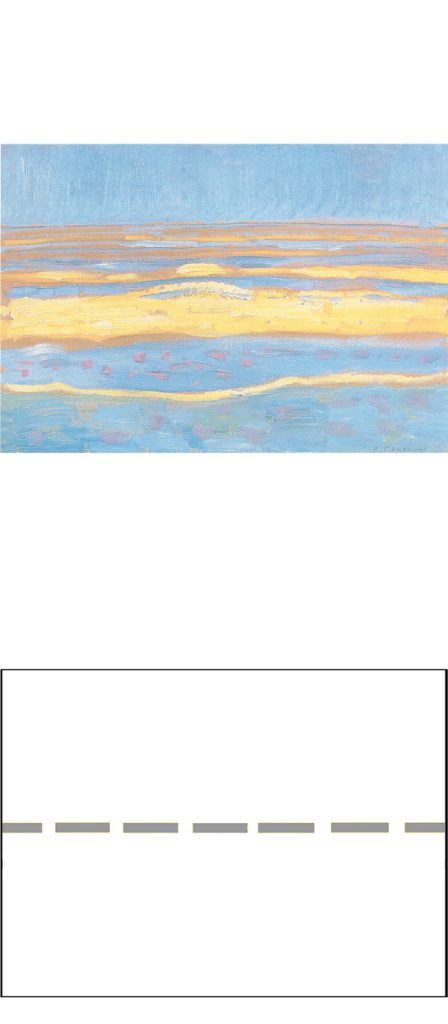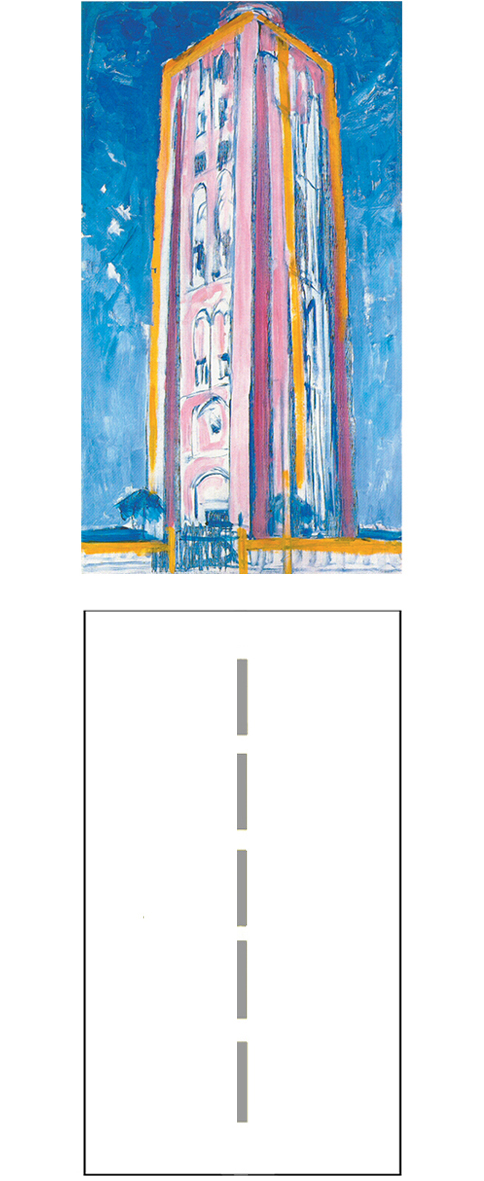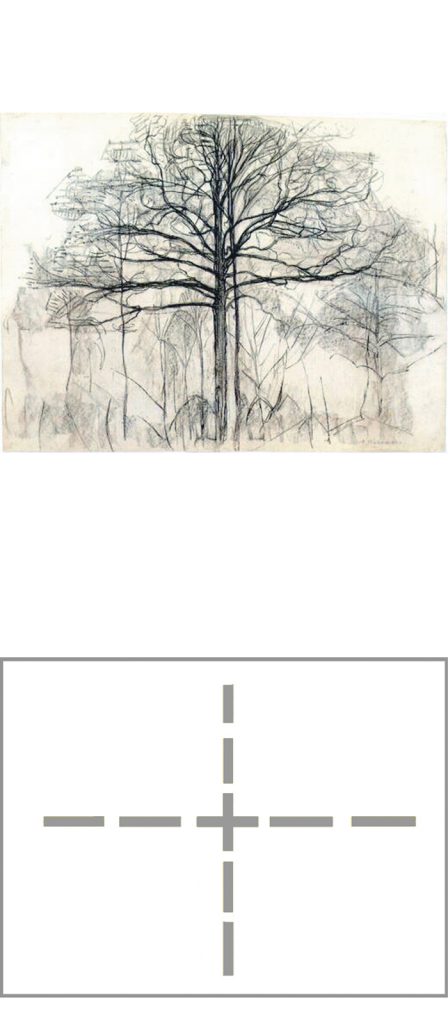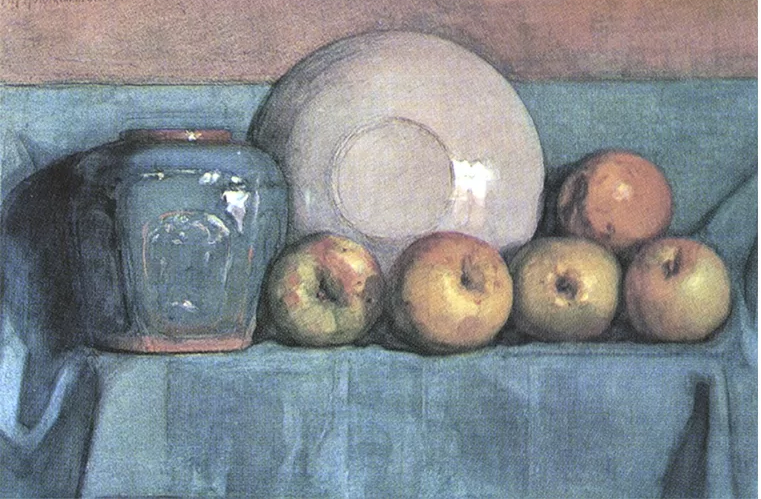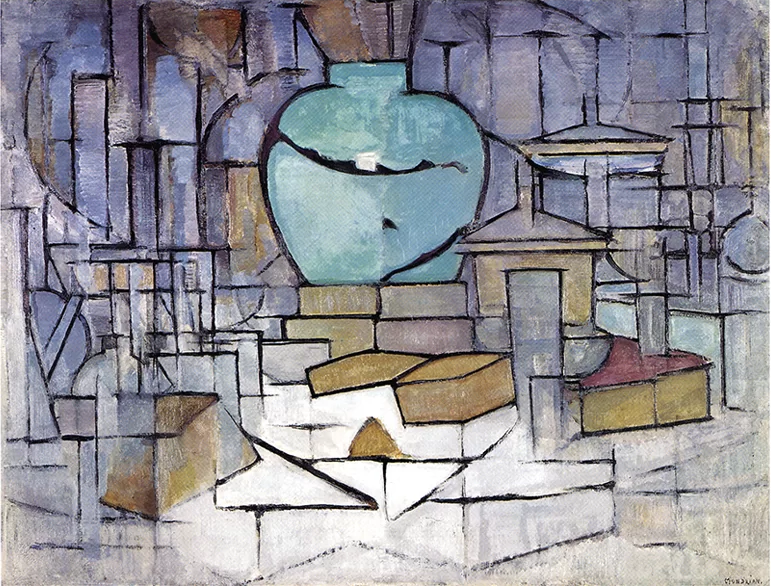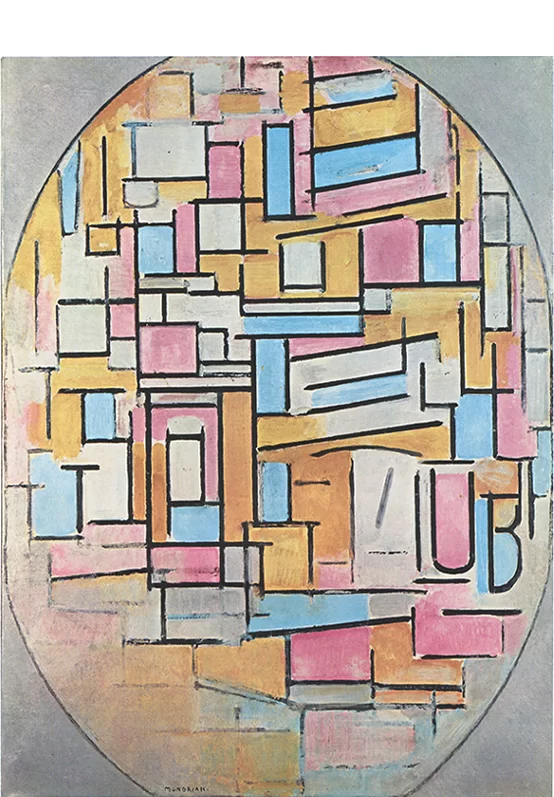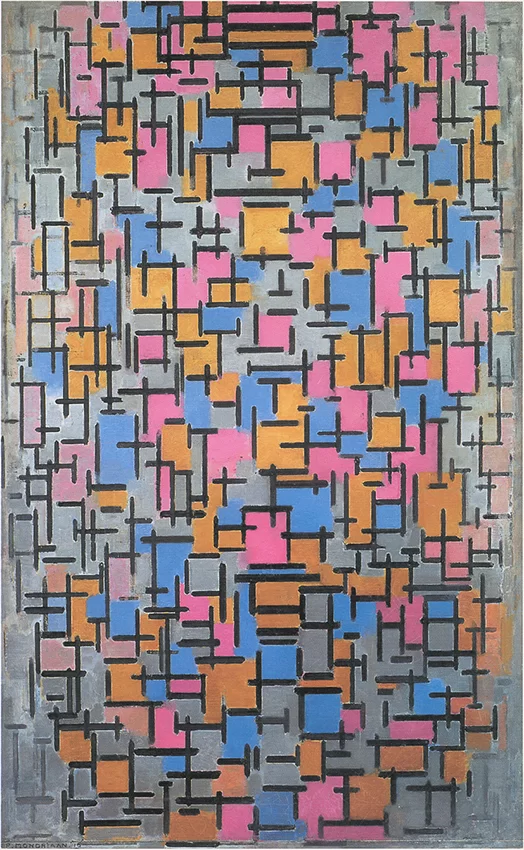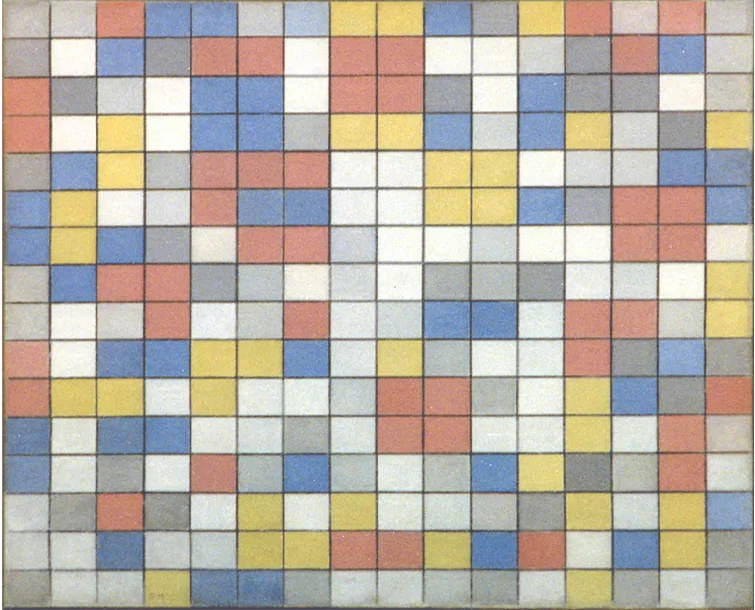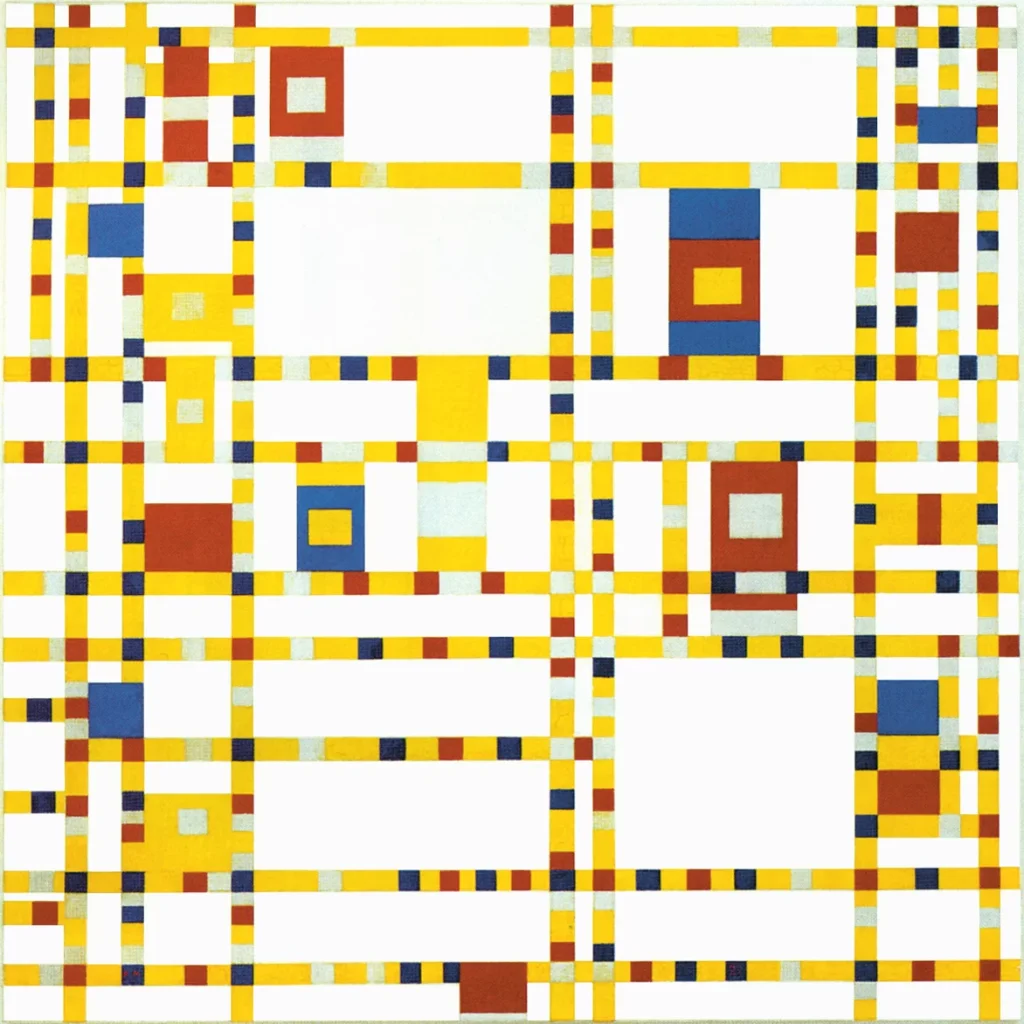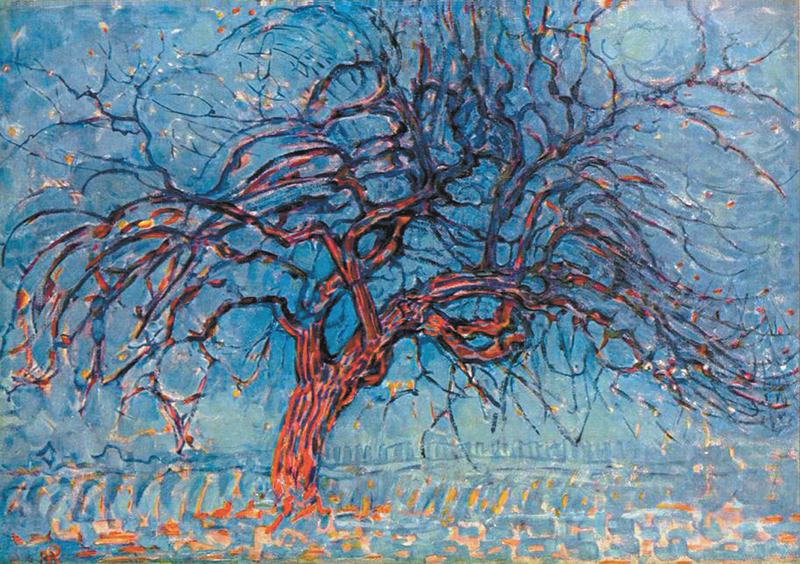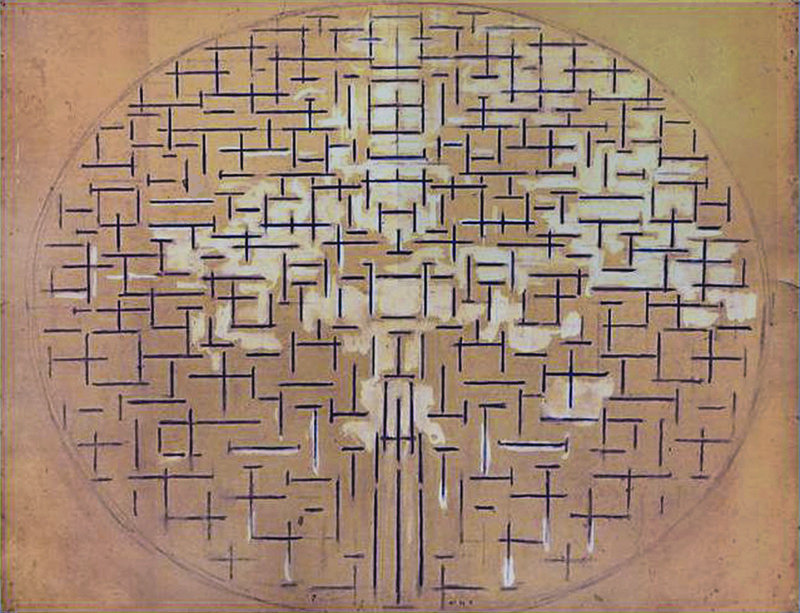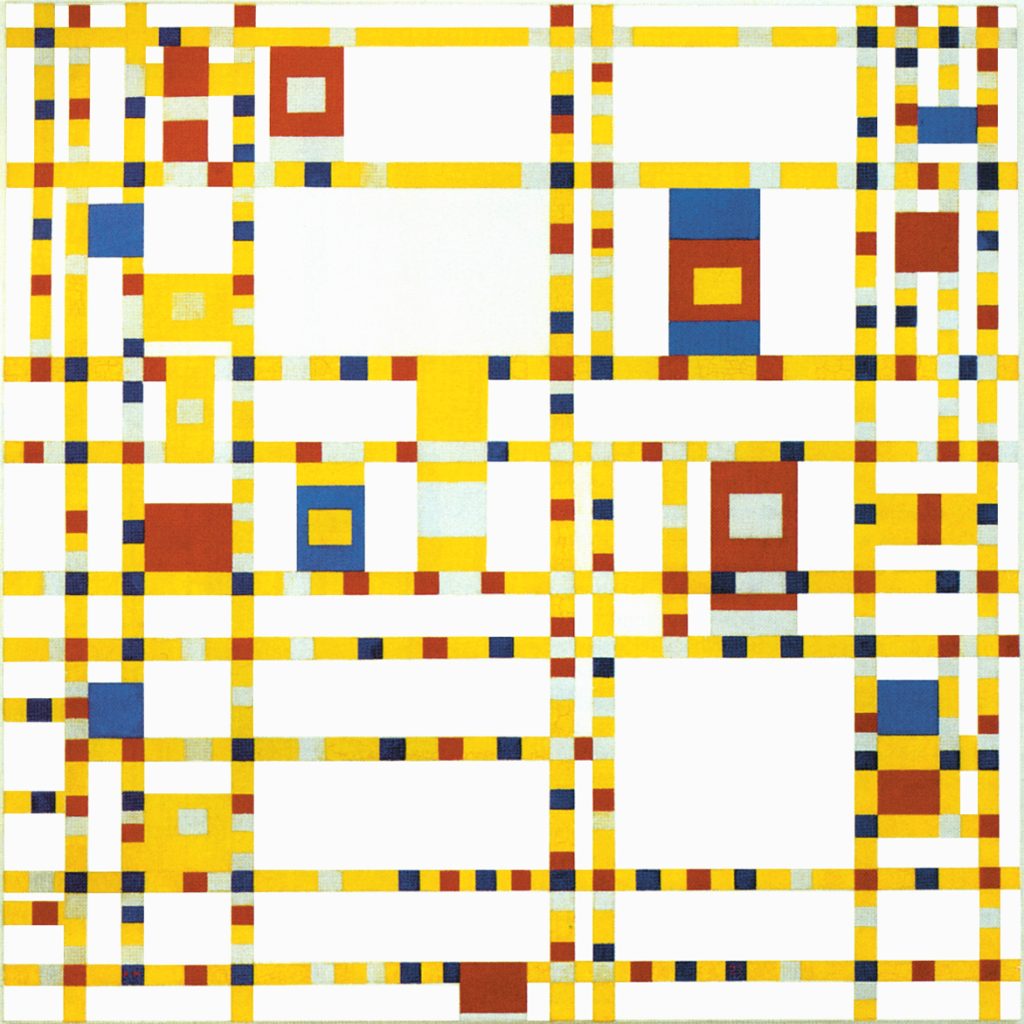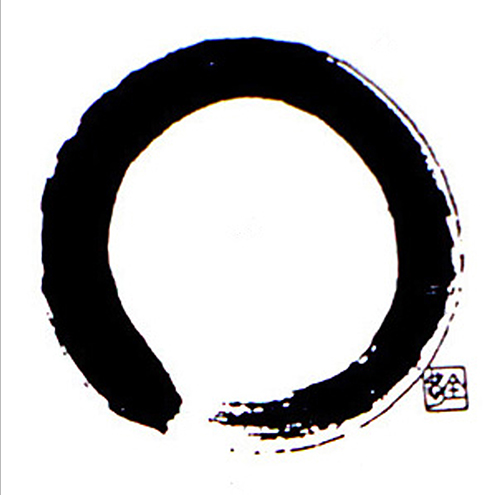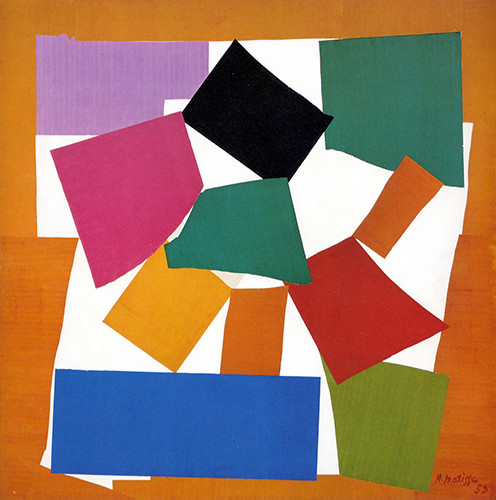
Piet Corneljis Mondriaan (changed his name to Mondrian) was born on 7 March 1872 in the small town of Amersfoort in the Netherlands. At the age of forty he moved to Paris where he lived and worked until 1938 when, after a two-year stay in London, he finally moved to New York City where he died on 1 February 1944.
Oeuvre
Piet Mondrian’s oeuvre is rightly associated with the concept of “evolution” as explained in detail in the following pages. The works of other artists show evolution processes as well. In Mondrian’s case, however, the evolution has revolutionized the fundamental rules of plastic space which have been the basis of European painting for over five centuries. A revolution that, in my opinion, has not been fully understood yet.
Mondrian’s oeuvre has introduced radical changes in the way painting represents reality. From images that reproduce the outward appearance of things, to which we are accustomed, to compositions of lines and planes of colors, a space that no longer seems to have anything in common with our immediate perception of reality.
One of the aims of these pages is to explain the reasons for this evolution by showing how to read and interpret abstract painting in relation to everyday life and the universal themes of the human condition.
In a world where the parts have grown superabundantly, where the firm points of reference and age-old certainties have been lost, the capacity for abstraction becomes indispensable in rediscovering a certain essence of things.
A certain way of understanding art can contribute today toward recasting the vision of greater breadth that has been lacking on the frenzied and fragmentary cultural scene over the last few decades.
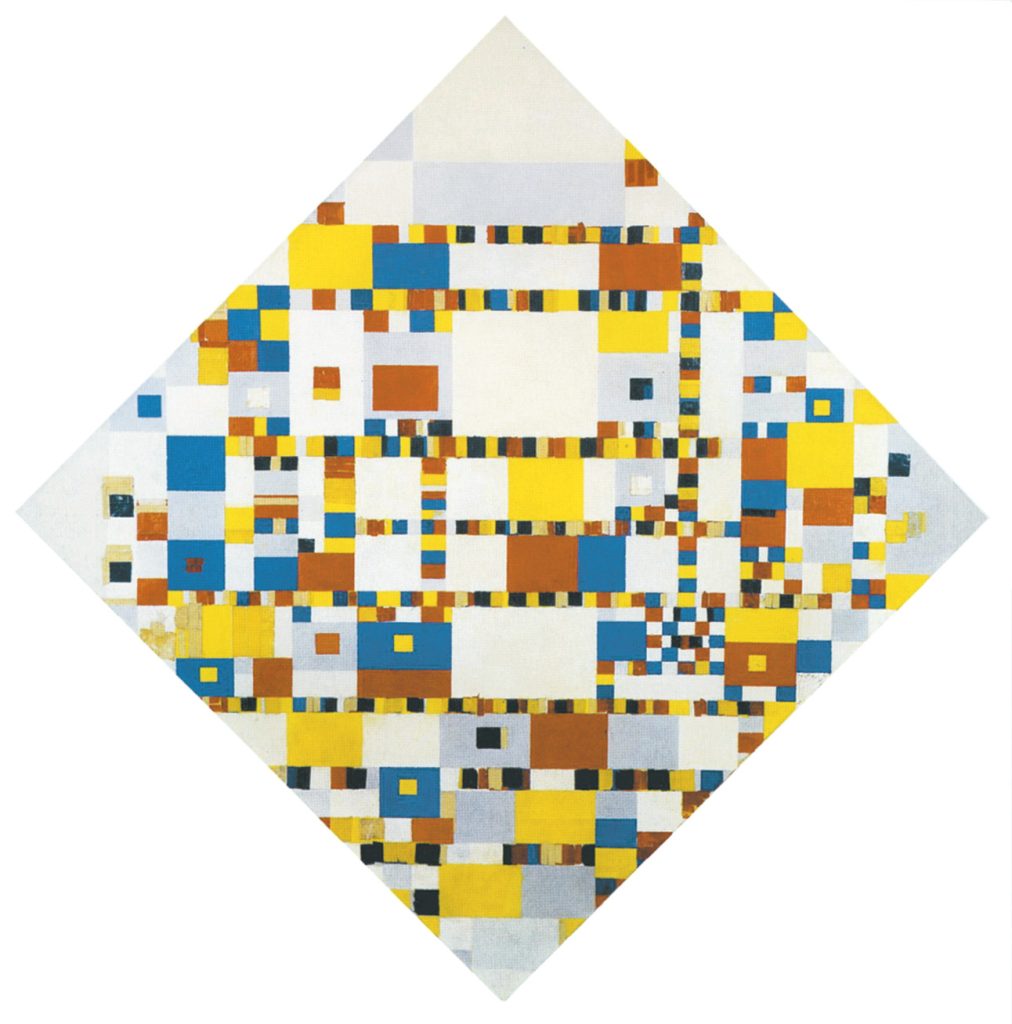
Oil and Paper on Canvas, cm 126 x 126
Victory Boogie Woogie Mondrian’s last composition which has remained unfinished, is a sort of spiritual testament containing an exhortation addressed to future artists and mankind in general: art must be able to transform the discords of the real world into plastic harmonies serving as a model for the future developments of life; art must be able to improve the world.
Victory Boogie Woogie remains incomplete because every human action aimed at improving the world will necessarily be left unfinished. It is an open process that will never come to an end.
Horizontal and vertical
How does the Dutch painter come to a space based on a relationship between horizontal and vertical straight lines?
From figuration to abstraction
A short insight into the transition from pictorial realism to reality.
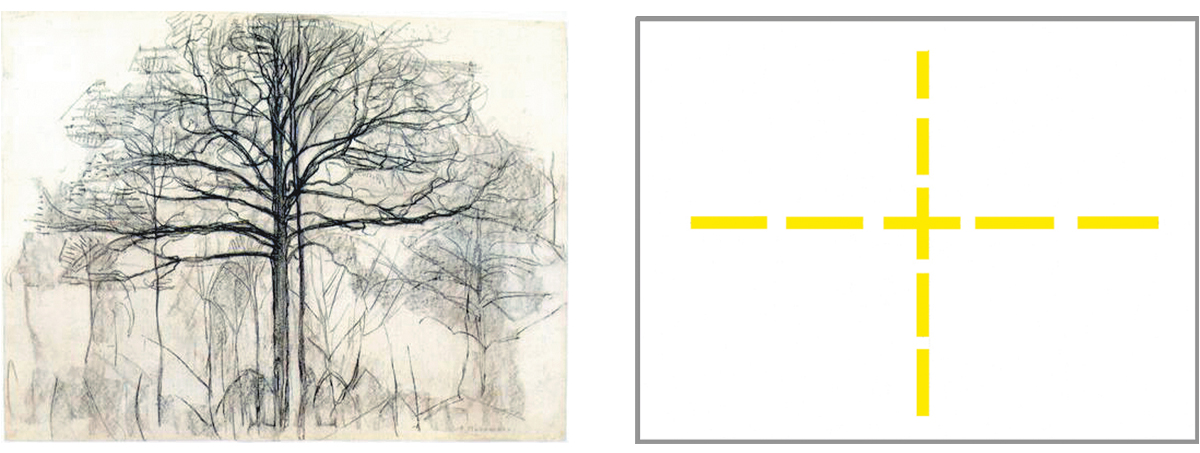
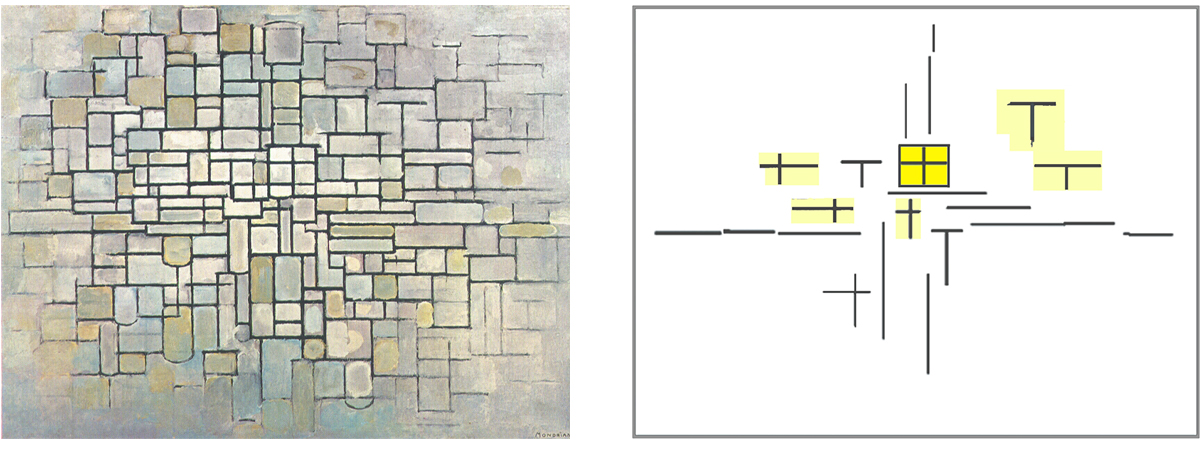
An overview of the entire oeuvre
Mondrian’s oeuvre has been an evolutionary process which has revealed itself as an organic structure in which one canvas cannot be separated from another without losing sight of the deeper meaning of the whole. That vision is encapsulated in Broadway Boogie Woogie, his last work, completed in 1943. It really is a most fascinating trajectory.
Mondrian condensed into three key paintings
The evolution and substantial meaning of Mondrian’s entire oeuvre can be condensed into three fundamental works.
The page also explains why Neoplastic vision is an effective tool to deal with today’s sense of reality.
We perceive a sea horizon as a straight line, whereas it is actually curved. Is what we see true reality?
Reflections
This section develops further reflections on the relationships between neoplastic space, philosophy, science, urban space, individual and social life. A page reflects on today’s official artistic scene.
Zen, Matisse, Mondrian
A comparison between Broadway Boogie Woogie and two paintings, respectively by an unknown Zen painter of the 19th century and by Henri Matisse, suggests different ways to see reality in abstract terms, that is, at a universal level.
“Every human being is born with a natural vocation towards the universal and those who believe that painting means using only brushes and not the head are incapacitated who would like to reduce man to less than what he really is.” (M. Seuphor)
Past and present
A comparison of two frescoes by Raffaello Sanzio and a painting by Piet Mondrian highlights commonalities between such distant works showing, mutatis mutandis, an unexpected and compelling continuity between past and present.
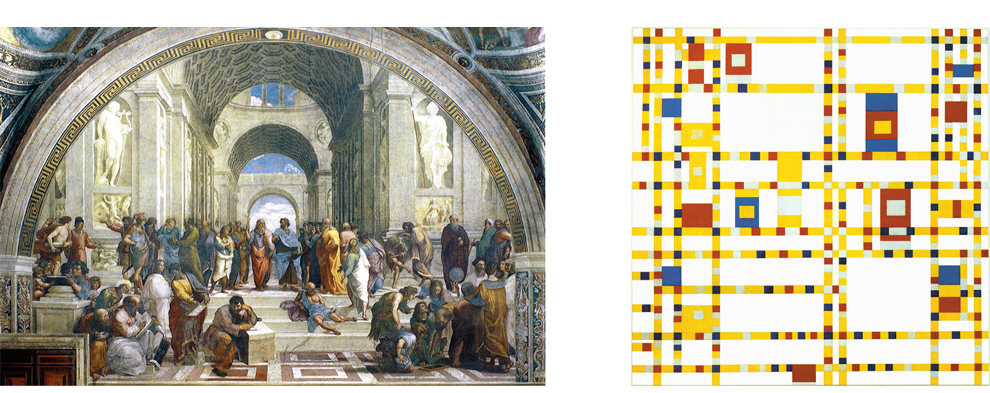
The author of these studies
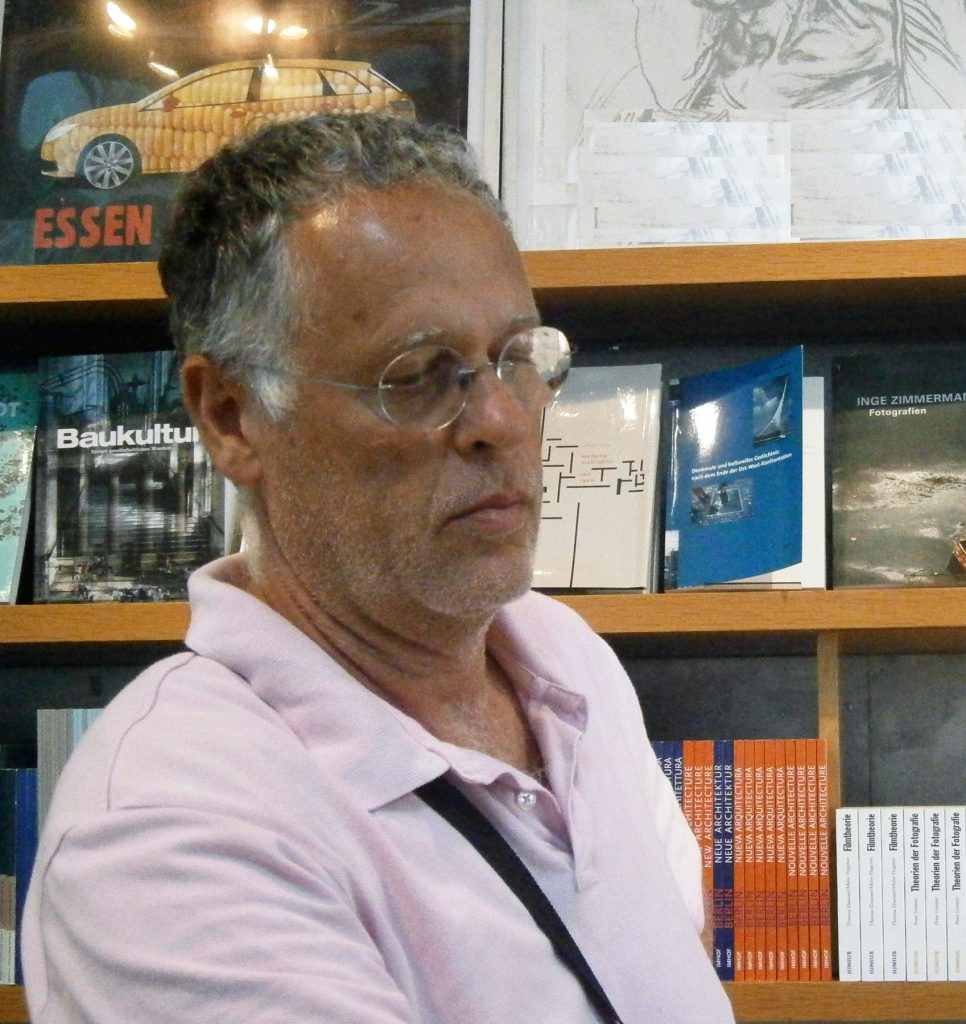
Michael Sciam is an artist and art theorist. A selection of his works can be seen here. He has studied architecture and art history at the university in Rome while painting had been always present in his life and gained momentum when he decided to grant his inner vision with freer ways of expression. Although he is not an art critic, Sciam writes about painting believing in a didactic and social function of art. He seeks to show the wealth of existential content that makes abstract painting a tool capable of contributing both to our understanding of today’s world and to the development of tomorrow’s. This is what Sciam says about his studies on Mondrian.
Downloadables
The following documents are available for non-profit educational purpose:
How To See Mondrian
This is an essay in between a book and a virtual exhibition. It consists of six plates and sixteen pages. The six plates can be printed and mounted on a wall to visualize an evolutionary process within Mondrian’s complete oeuvre which offers a sort of exhibition route similar to that of an actual show.
Five plates measuring 297×880 mm. each, present a first synthetical overview on Mondrian’s oeuvre: PDF
Sixteen pages measuring 297×880 mm. each, analyze Mondrian’s entire oeuvre in detail: PDF
A sixth plate measuring 297×1320 mm. summarizes Mondrian’s oeuvre: PDF
The first download may take a longer time.
For easier reading, it is recommended to print the plates and the pages. This can be easily done at any suitable printing center.
Past and Present
Ten A3 pages show a comparison of La Disputa del Sacramento (1908-10), La Scuola di Atene (1510-12) by Raffaello Sanzio and Broadway Boogie Woogie (1942-43) by Piet Mondrian. PDF
Broadway Boogie Woogie and Reality
Eight A4 pages (PDF) and one A2 page (PDF) discuss some aspects of reality depicted through shapes and colors in the latest composition completed by Mondrian.
News
Will soon be published
Links
www.pietmondrian.eu (Deutsch – Italiano)
Copyright
1989 – 2025 Michael (Michele) Sciam All Rights Reserved More
U.S. Library of Congress: 1 – 2 – 3 – 4 – 5 – 6
BRD-Urheberrechtsgesetz
